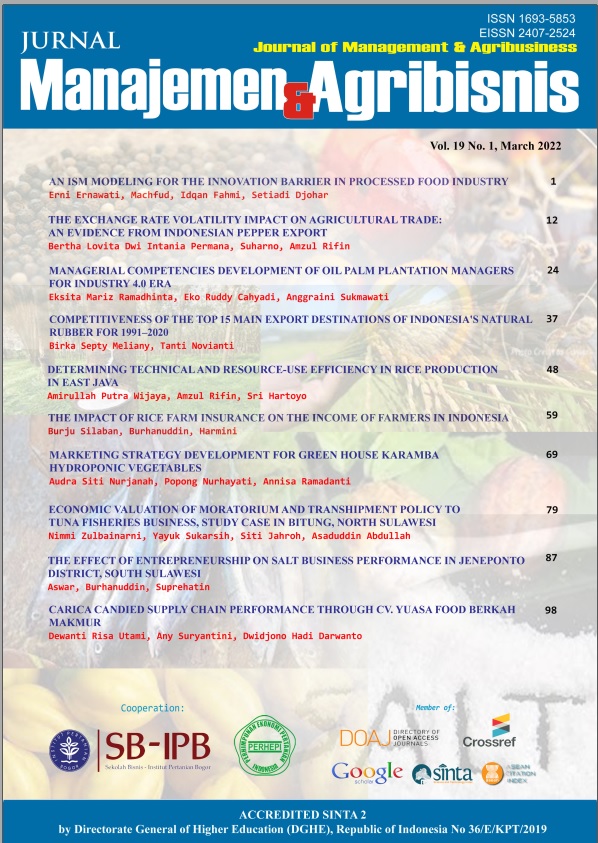Carica Candied Supply Chain Performance Through CV. Yuasa Food Berkah Makmur
Abstract
Carica fruit as the main raw material for making candied carica is an endemic fruit which only grow in the Dieng Plateau of Wonosobo Regency. It causes the limitation of carica raw materials in the carica processing industry. The objective of this study is to analyze the performance of the carica candied supply chain passing through the company starting from the supply of raw materials to the carica candied products to consumers. The analytical method used is the Supply Chain Operation Reference (SCOR) model. Primary data used are based on direct observation and interviews with 20 farmers of supplier respondents, historical data of CV. Yuasa Food Berkah Makmur was in November 2018-October 2019 and 25 agents/retailers. The results of the analysis of the carica candied supply chain performance indicate the responsiveness and reliability attributes have achieved the best performance (superior). Supply chain performance values on the asset management attributes reach a good position (advantage), and the cost attribute in the Cost of Good Solds (COGS) metric reaches a good position (advantage) as well as the Total Supply Chain Management Cost (TSCMS) metric that has not yet achieved good performance (parity). There is a need to evaluate the cost of the carica candied supply chain activity to improve performance.
Keywords: Candied carica, performance, supply chain, SCOR
Authors
Authors who publish with this journal agree to the following terms:
- Authors retain copyright and grant the journal right of first publication with the work simultaneously licensed under a Creative Commons Attribution License that allows others to share the work with an acknowledgement of the work's authorship and initial publication in this journal.
- Authors are able to enter into separate, additional contractual arrangements for the non-exclusive distribution of the journal's published version of the work (e.g., post it to an institutional repository or publish it in a book), with an acknowledgement of its initial publication in this journal.
- Authors are permitted and encouraged to post their work online (e.g., in institutional repositories or on their website) prior to and during the submission process, as it can lead to productive exchanges, as well as earlier and greater citation of published work (See The Effect of Open Access).

